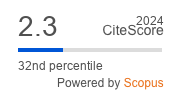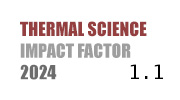THERMAL SCIENCE
International Scientific Journal
Authors of this Paper
External Links
VISUAL EXPERIMENTAL STUDY ON START-UP AND HEAT TRANSFER CHARACTERISTICS OF FLAT-PLATE PULSATING HEAT PIPE
ABSTRACT
The flat-plate pulsating heat pipe (FP-PHP) offers several advantages, including a simple structure, low cost, high reliability, and effective heat transfer performance. These attributes contribute to its widespread use in the heat dissipation of various electronic devices. The operation of a FP-PHP involves a complex process of phase change heat transfer. To gain a clearer understanding of how the working fluid behaves within the FP-PHP, this paper presents a visualization experiment focused on FP-PHP with rectangular cross-section channels. The experiment primarily examines the start-up and heat transfer characteristics of the FP-PHP under different heating powers and inclination angles. Additionally, it analyzes the vapor-liquid two-phase flow patterns within the pipe under various operating conditions. Experimental results indicate that as heating power increases, the flow pattern in the evaporation section of the FP-PHP changes from a plug-shaped flow to a local annular flow, and subsequently from a local annular flow to a global annular flow. Higher heating power results in a shorter start-up time and a higher start-up temperature for the FP-PHP. The heat transfer characteristics are optimal when the inclination angle is at 90°. At this angle, with a heating power of 120 W, the thermal resistance of the FP-PHP measures only 0.51°C/W.
KEYWORDS
PAPER SUBMITTED: 2024-12-31
PAPER REVISED: 2025-02-08
PAPER ACCEPTED: 2025-02-13
PUBLISHED ONLINE: 2025-03-08
DOI REFERENCE: https://doi.org/10.2298/TSCI241231036C
CITATION EXPORT: view in browser or download as text file
2025 Society of Thermal Engineers of Serbia. Published by the Vinča Institute of Nuclear Sciences, National Institute of the Republic of Serbia, Belgrade, Serbia. This article is an open access article distributed under the terms and conditions of the Creative Commons Attribution-NonCommercial-NoDerivs 4.0 International licence

